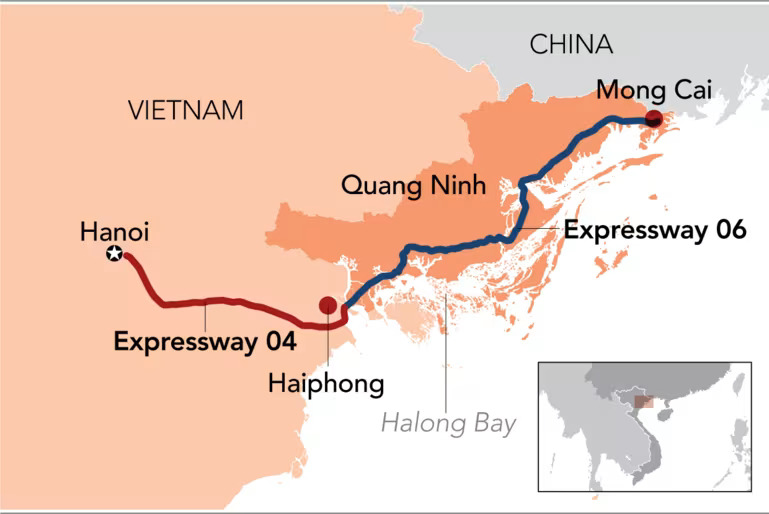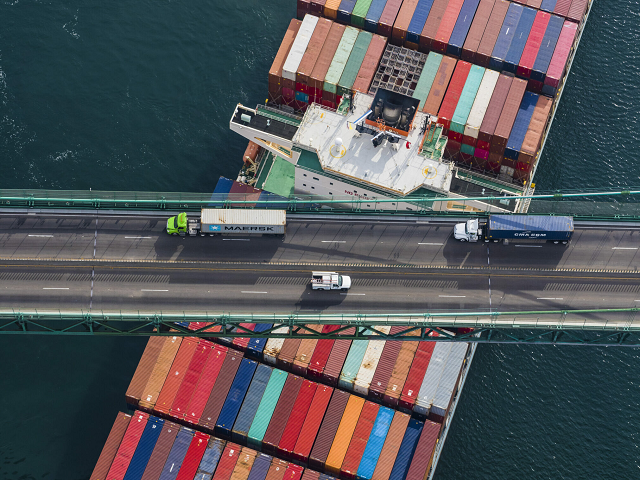Quang Ninh Overtakes Hanoi, Ho Chi Minh City in FDI Attraction
Quang Ninh has recently emerged as Vietnam’s top foreign direct investment (FDI) destination, surpassing Hanoi, Ho Chi Minh City, and other localities amid global supply chain diversification and a new port in a neighboring city.
According to the latest statistics from the General Statistics Office, foreign investors poured $3.2 billion into Quang Ninh Province by the end of 2023, marking an increase of over 42% compared to the same period in 2022. This not only sets a record for the province’s FDI attraction but also propels Quang Ninh to the forefront of the country in terms of FDI.
Thai Binh Province ranked as the second-most attractive destination, securing $2.68 billion, followed by Bac Giang Province with $1.53 billion.
Quang Ninh Province expects to receive another $1 billion in the first quarter of 2024 and eyes surpassing $3 billion for the second consecutive year.
Quang Ninh’s Strategic Advantages
Quang Ninh attributes its FDI attraction success to several factors, including the province’s focus on infrastructure projects with extensive spillover effects.
In February 2023, the Prime Minister approved the Quang Ninh Provincial Planning for the 2021-2030 period with a vision to 2050. This marks the first provincial planning in the Red River Delta region to receive approval.
Subsequently, Decision 1279/QD-TTg was issued to implement the planning, aiming to complete the provincial planning system and prioritize infrastructure projects that drive development.

Quang Ninh’s strategic location and proximity to Hai Phong’s major port are key advantages. Graphic: Nikkei
Quang Ninh shares both land and maritime borders with China and began to gain attention as the US-China trade war intensified. Due to its proximity to China and its 250 km coastline, the province is viewed as a prime location for companies looking to diversify their production outside China.
In recent years, Quang Ninh has also witnessed a rise in the number of LNG and wind power plants. This reflects the province’s broader energy transition. Industries such as solar photovoltaic technology, electronics, and petrochemicals are also expanding in the province.
Among these, the photovoltaic technology project of Jinko Solar PV Vietnam is considered the largest and most symbolic, with a total registered capital of over VND 34.65 trillion ($1.5 billion).
Furthermore, the inauguration of Lach Huyen International Port in Hai Phong in 2018 has been a significant catalyst for the city and surrounding areas. It is the first large-scale port in northern Vietnam with a depth of 14 meters. Prior to its opening, the area had only a shallow port where large container ships could hardly enter. The new Hai Phong port has transformed the city and neighboring areas into attractive investment destinations.
The opening of Highway 04 connecting to Hanoi also coincided with the port’s development. Meanwhile, Highway 06 to Mong Cai City, near the Chinese border, in 2022, created substantial connectivity opportunities for Quang Ninh Province.
The province’s strategic importance is further highlighted in railway development plans. On April 10, the Government Office released the conclusion of the Government Standing Committee on the planning of the Red River Delta region for the 2021-2030 period, with a vision to 2050. The plan emphasizes the priority of preparing and commencing the construction of a high-speed railway line expected to terminate in Hai Phong and Quang Ninh provinces before 2030.
Until a few years ago, Hanoi and Ho Chi Minh City, Vietnam’s two largest urban centers, dominated the country’s investment landscape. However, labor costs and industrial zone prices have soared in recent years.
According to Sufex Trading, a Japanese firm, industrial zones in Hanoi charge rentals between $100 and $170 per square meter, up from $90 to $120 in 2019, while prices in Ho Chi Minh City range from $160 to $270.
In Quang Ninh, rental rates range from $80 to $100, compared to $60 to $70 before the pandemic.
Labor costs are also lower outside major urban areas. According to Vietnam’s General Statistics Office, the average monthly salary in Hanoi in 2022 was VND 8.86 million ($385). In Ho Chi Minh City, it was VND 9.1 million, while in Quang Ninh, it was VND 7.03 million.







































